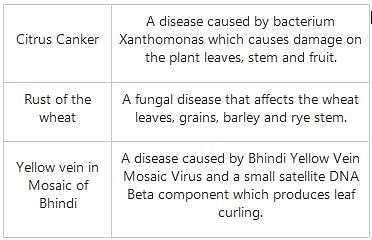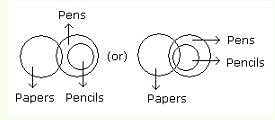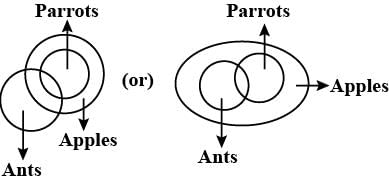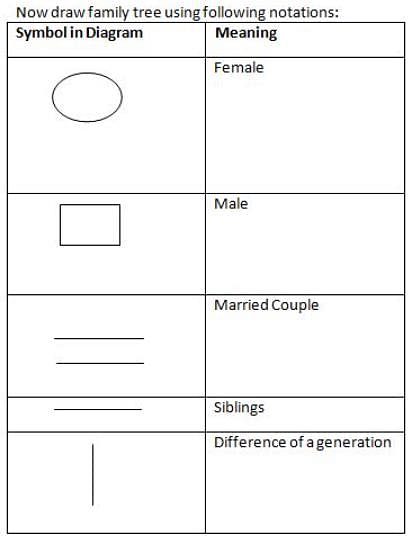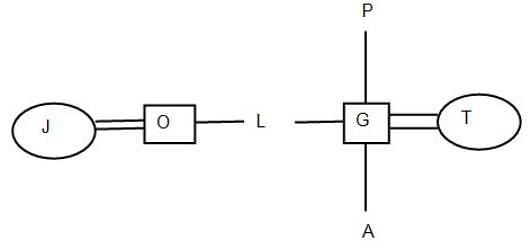EMRS TGT Maths Mock Test - 4 - EMRS MCQ
30 Questions MCQ Test EMRS TGT Mock Test Series 2024 - EMRS TGT Maths Mock Test - 4
Which among the following is the dimension of the Rs. 20 Currency Note issued by the Reserve Bank of India?
| 1 Crore+ students have signed up on EduRev. Have you? Download the App |
A thermoelectric refrigerator works on which of the following principles?
Which of the following is/are plant disease/s:
I. Citrus Canker
II. Rust of the Wheat
III. Yellow vein Mosaic of bhindi
Which of the following is a colourless organelle found in plant cells used for storage of food or starch?
If W > X, X > Y and Y > Z, then which of the following conclusions is definitely wrong?
In the following question assuming the given statements to be true, find which of the conclusion among given conclusions is/are definitely true and then give your answer accordingly.
Statements:
L > F = S < T ≤ Q < P
Conclusions:
I. F < Q
II. L > S
III. T < P
Statements:
Some papers are pens.
All the pencils are pens.
Conclusions:
1. Some pens are pencils.
2. Some pens are papers.
Statements:
Some ants are parrots.
All the parrots are apples.
Conclusions:
1. All the apples are parrots.
2. Some ants are apples.
Directions: Study the following information carefully to answer the given Questions:
P^Q-P is the child of Q
P!Q-P is the parent of Q
P*Q - P is elder to Q
P#Q-P is younger to Q
P@Q-P is brother of Q
P&Q - P is wife of Q
P+Q-P is sister-in-law of Q
Q. If I!J@K#L^I!M*K, the age of M is 25 years and age of L is 32 years, so what can be the age of K?
Directions: Study the following information carefully to answer the given Questions:
P^Q-P is the child of Q
P!Q-P is the parent of Q
P*Q - P is elder to Q
P#Q-P is younger to Q
P@Q-P is brother of Q
P&Q - P is wife of Q
P+Q-P is sister-in-law of Q
Q. If G! A^T+J&O@L^P! G, then how is J related to A?
Vivek travelled 12kms West, then he turned left and travelled 8kms. Then he turned left and travelled 12kms. How far was Vivek from starting point ?
Point W is 7m towards the West of point X. Point X is 3m towards the North of point Y. Point Z is 4m towards West of point Y……………
Q.
If a person walks 3m towards South from point W and reaches point Q, which of the following 2 points would fall in straight line including Q
Point W is 7m towards the West of point X. Point X is 3m towards the North of point Y. Point Z is 4m towards West of point Y……………
Q.If a person walks 3m towards South from point W and reaches point Q, which of the following 2 points would fall in straight line including Q
---------- Bar is located at top of WordPad / Notepad /MS Word window.
What type of virus use computer hosts to reproduces it?
---------- is a signaling method that handles a relatively wide range of frequencies.
The vast network of computers that connects millions of people all over the world is called.
The property that, when classes are arranged in a hierarchy, each class assumes the attributes and methods of its ancestors is
Which system of education was propounded by Mahatma Gandhi?
Which of the following is not correct about the role of government in schooling?
As a social institution, the essential function of the family is -
Which of the following is not a correct statement about children's education in the family?
Caring for the cultivation of emotional health of children is as important for the schools as caring for the cultivation of their intellect, not because
Which is incorrect about the school as a social institution?
Which of the following type of economy places higher value on education?
|
5 docs|20 tests
|


